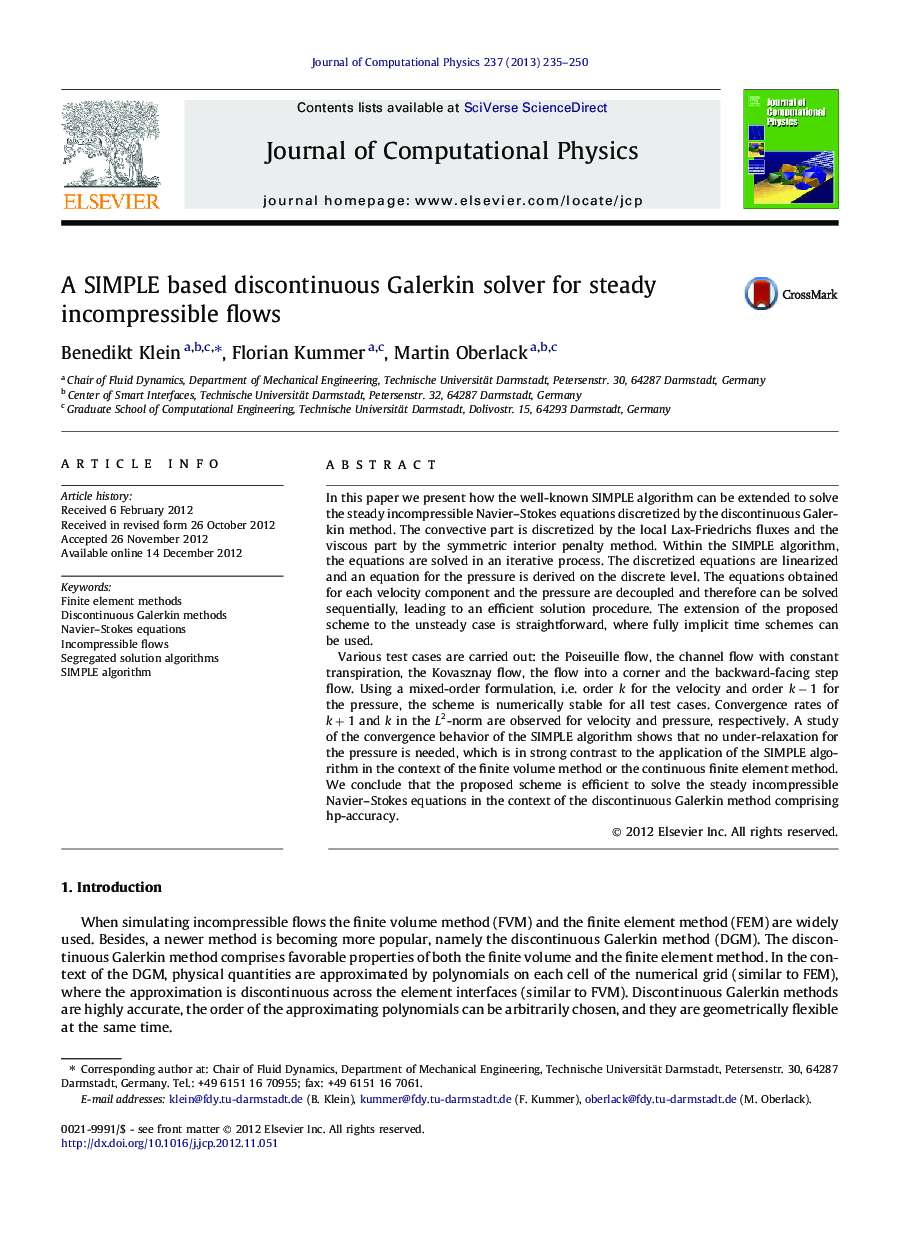| Article ID | Journal | Published Year | Pages | File Type |
|---|---|---|---|---|
| 521541 | Journal of Computational Physics | 2013 | 16 Pages |
In this paper we present how the well-known SIMPLE algorithm can be extended to solve the steady incompressible Navier–Stokes equations discretized by the discontinuous Galerkin method. The convective part is discretized by the local Lax-Friedrichs fluxes and the viscous part by the symmetric interior penalty method. Within the SIMPLE algorithm, the equations are solved in an iterative process. The discretized equations are linearized and an equation for the pressure is derived on the discrete level. The equations obtained for each velocity component and the pressure are decoupled and therefore can be solved sequentially, leading to an efficient solution procedure. The extension of the proposed scheme to the unsteady case is straightforward, where fully implicit time schemes can be used.Various test cases are carried out: the Poiseuille flow, the channel flow with constant transpiration, the Kovasznay flow, the flow into a corner and the backward-facing step flow. Using a mixed-order formulation, i.e. order k for the velocity and order k-1k-1 for the pressure, the scheme is numerically stable for all test cases. Convergence rates of k+1k+1 and k in the L2L2-norm are observed for velocity and pressure, respectively. A study of the convergence behavior of the SIMPLE algorithm shows that no under-relaxation for the pressure is needed, which is in strong contrast to the application of the SIMPLE algorithm in the context of the finite volume method or the continuous finite element method. We conclude that the proposed scheme is efficient to solve the steady incompressible Navier–Stokes equations in the context of the discontinuous Galerkin method comprising hp-accuracy.
